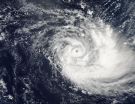(Press-News.org) Since 2007, California has had one of the most aggressive incentive programs in the country for putting solar-electric panels on the rooftops of homes and businesses. Its $2.2 billion California Solar Initiative (CSI)has provided a per-watt rebate for installing residential and commercial photovoltaic systems. During this period, the solar industry in the state has experienced double-digit growth and to date has installed more than 245,000 systems capable of producing 2,365 megawatts of electricity.
As a result, CSI has been widely touted as a major success. However, a new study that uses an advanced method called "data-driven agent-based modeling" finds that using the same amount of money in a carefully optimized program to provide systems to low-income households at little or no cost would have done more to stimulate the adoption of rooftop solar systems than the incentive-based approach that the initiative used.
The new study was performed by doctoral student Haifeng Zhang and Assistant Professor of Computer Science Yevgeniy Vorobeychik at Vanderbilt University in collaboration with Joshua Letchford and Kiran Lakkaraju at Sandia National Laboratories and is described in the Proceedings of the 14th International Conference on Autonomous Agents and Multiagent Systems scheduled for publication in May.
The problem with assessing the success of programs like CSI is that you need to compare them with what would have happened in the same world without the incentives"The problem with assessing the success of programs like CSI is that you need to compare them with what would have happened in the same world without the incentives," said Vorobeychik. "Of course, that is impossible, so you need to use techniques, like the our data-driven agent-based modeling methodology, that analyze the data and make predictions on how it would behave under different circumstances."
Vorobeychik and his colleagues used CSI data on rooftop solar installations from May 2007 to April 2013 in San Diego County for their analysis. This included detailed information on 8,500 projects, including system size, reported cost, incentive amount, whether system was purchased or leased, installation date, location and acreage of the lot and size of the home.
Using the data from May 2007 to April 2011, the analysts applied methods developed in the field of machine learning to create a model of the relative importance that two factors - economic benefit and peer influence - play on an individual's decision to install a rooftop solar system. In this case, they used the number of existing installations in an area as the measure of peer influence. Then they tested the accuracy of their model by predicting the pattern of adoption from May 2011 to April 2013.
To test the effectiveness of financial subsidies on the market, the researchers looked at a range of incentives from zero to eight times the actual the level. They were surprised to find very little difference in adoption rates between no subsidy and the actual subsidy. Increasing the subsidy rate did increase the number of adoptees but even at the highest level the effect was extremely modest.
"Despite the fact that policy makers have paid overwhelming attention to increasing the economic benefits by reducing costs to get people to adopt solar technology, our analysis indicates that this has much less effect than generally perceived," said Vorobeychik. "That is what the data is telling us."
One of the factors that reduced the impact of the incentive program, they found, was the increasing prevalence of leasing. When the program started, homeowners were buying virtually all of the systems so they were receiving the rebates. In recent years, however, the installers began offering attractive leasing packages that have become increasingly popular. When systems are leased, however, it is the installers who receive the rebates and, according to the data, they have not been passing the incentive along to the homeowners.
Since the financial incentives had such a limited effect, the researchers decided to see if they could design a more effective subsidy scheme based on peer influence: The fact that the larger the number of solar installations in a person's neighborhood the more likely they are to decide to install a system.
To do so, Vorobeychik and his colleagues explored the impact of scaling up a small existing CSI program that gives solar systems to low-income families for little or no cost. They determined that an optimal program of this type could result in significantly greater adoption compared to the incentive approach. In addition, they found that its relative advantage increased at higher budget levels.
The finding is consistent with the academic literature that provides strong evidence of the importance of peer influence. "But there has not been as much attention paid to peer effects at the policy level, perhaps because policy makers are used to the idea of stimulating markets by offering subsidies and because there is less understanding about how to leverage peer influence," Vorobeychik said.
In the past, people have used traditional econometric techniques to evaluate programs of this kind. The issue with such traditional analysis is that it does not take into account the complex ways in which the individual decisions made by a diverse cast of characters interact. As a result, the associated models cannot easily be used to evaluate policies that leverage individual diversity (such as giving systems away to low-income households).
According to the computer scientist, that is where data-driven agent-based modeling has an advantage. It is a relatively new technique made possible by recent increases in computer power and the growing availability of large amounts of digital data that has become the favored approach in studying emergent behaviors that arise from the actions of large numbers of agents in social and economic contexts.
INFORMATION:
This research was partially supported by U.S. Department of Energy contract VU 2191.
Visit Research News @ Vanderbilt for more research news from Vanderbilt.
Numerous studies over the past 30 years have linked exposure to nature with improved human health and well-being. These findings are of growing importance: In the near future, 70% of the world's population will live in cities, where they will face a rising tide of lifestyle-related disease. Still, little is known about the mechanisms underlying the nature-health connection, and confusion awaits those who would transform existing findings into action.
In the June issue of BioScience, a group of biologists and public health experts led by Danielle F. Shanahan address this ...
The ceremonial opening kick of the 2014 FIFA World Cup in Sao Paolo, Brazil, which was performed--with the help of a brain-controlled exo-skeleton--by a local teen who had been paralyzed from the waste down due to a spinal cord injury, was a seminal moment for the area of neuroscience that strives to connect the brain with functional prosthetics. The public display was a representative of thousands of such neuroprosthetic advances in recent years, and the tens of years of brain research and technological development that have gone into them. And while this display was quite ...
Strong vertical wind shear has taken a toll on Tropical Cyclone Ikola and that was pretty clear in a visible-light image from NASA-NOAA's Suomi NPP satellite today, April 8.
When Suomi NPP flew over Tropical Cyclone Ikola at 07:05 UTC (3:05 a.m. EDT), the Visible Infrared Imaging Radiometer Suite or VIIRS instrument aboard captured a visible image of the storm.
VIIRS is a scanning radiometer that collects visible and infrared imagery and "radiometric" measurements. Basically it means that VIIRS data is used to measure cloud and aerosol properties, ocean color, sea and ...
A University of Calgary study has found that rats fed a fibre supplement while on a high fat and high sugar diet show a much lower weight gain than those who did not eat the fibre. A team of researchers from the university's Cumming School of Medicine and the Faculty of Kinesiology says the study helps scientists better understand the mechanisms of weight control and energy balance.
"Our data shows that a simple dietary intervention, with a prebiotic oligofructose fibre, reduced weight gain, and this may also lead to the long-term maintenance of a lower body weight in ...
Argonne, Ill. - A clearer understanding of the origin recognition complex (ORC) - a protein complex that directs DNA replication - through its crystal structure offers new insight into fundamental mechanisms of DNA replication initiation. This will also provide insight into how ORC may be compromised in a subset of patients with Meier-Gorlin syndrome, a form of dwarfism in humans.
ORC is a six-subunit protein complex that directly binds DNA to recruit other protein factors involved in DNA replication. Researchers collected data at the Advanced Photon Source (APS), a U.S. ...
NASA and the Japan Aerospace Exploration Agency's GPM satellite provided scientists with a look "under the hood" of Tropical Cyclone Joalane's clouds at the rate in which rain was falling throughout the storm.
The Global Precipitation Measurement or GPM core observatory satellite flew over intensifying cyclone Joalane in the South Indian Ocean on April 6, 2015 at 0406 UTC (12:06 a.m. EDT). GPM's Microwave Imager (GMI) found that intense convective thunderstorms within Joalane were dropping rain at a rate of over 63 mm (2.5 inches) per hour.
Cyclone Joalane was located ...
Scientists who have spent much of their careers peering out of deep-sea submersibles to learn about deep-sea coral and sponges recently turned their attention to the Web, watching each other share their experiences and expertise through an innovative series of online seminars.
The seminars, sponsored by NOAA Fisheries, are now publicly available online. They cover the latest research into the fragile corals and sponges that bring color, habitat, and three-dimensional beauty to the deep ocean floor, far beyond the reach of snorkelers or scuba divers.
The web-based seminars ...
In a study that included more than 32,000 cases of melanoma among Medicare patients, approximately 1 in 5 experienced a delay of surgery that was longer than 1.5 months, and about 8 percent of patients waited longer than 3 months for surgery, according to an article published online by JAMA Dermatology.
Melanoma is a leading cause of new cancer diagnoses in the United States, accounting for most skin cancer¬related deaths. Surgical excision is the primary therapy for melanoma. Surgical delay may result in the potential for increased illness and death from other malignant ...
African-American women who live in rural areas have lower rates of major depressive disorder (MDD) and mood disorder compared with their urban counterparts, while rural non-Hispanic white women have higher rates for both than their urban counterparts, according to an article published online by JAMA Psychiatry.
MDD is a common and debilitating mental illness and the prevalence of depression among both African Americans and rural residents is understudied, according to background in the study.
Addie Weaver, Ph.D., of the University of Michigan, Ann Arbor, and coauthors ...
A magnetic resonance imaging (MRI)-based screening program for individuals at high risk of pancreatic cancer identified pancreatic lesions in 16 of 40 (40 percent) of patients, of whom 5 five underwent surgery, according to a report published online by JAMA Surgery.
Pancreatic cancer is a leading cause of cancer death and can be considered a global lethal disease because incidence and mortality rates are nearly identical. Although treatment has improved, the surgery rate in patients with ductal adenocarcinoma is around 30 percent and the five-year survival rate is less ...

